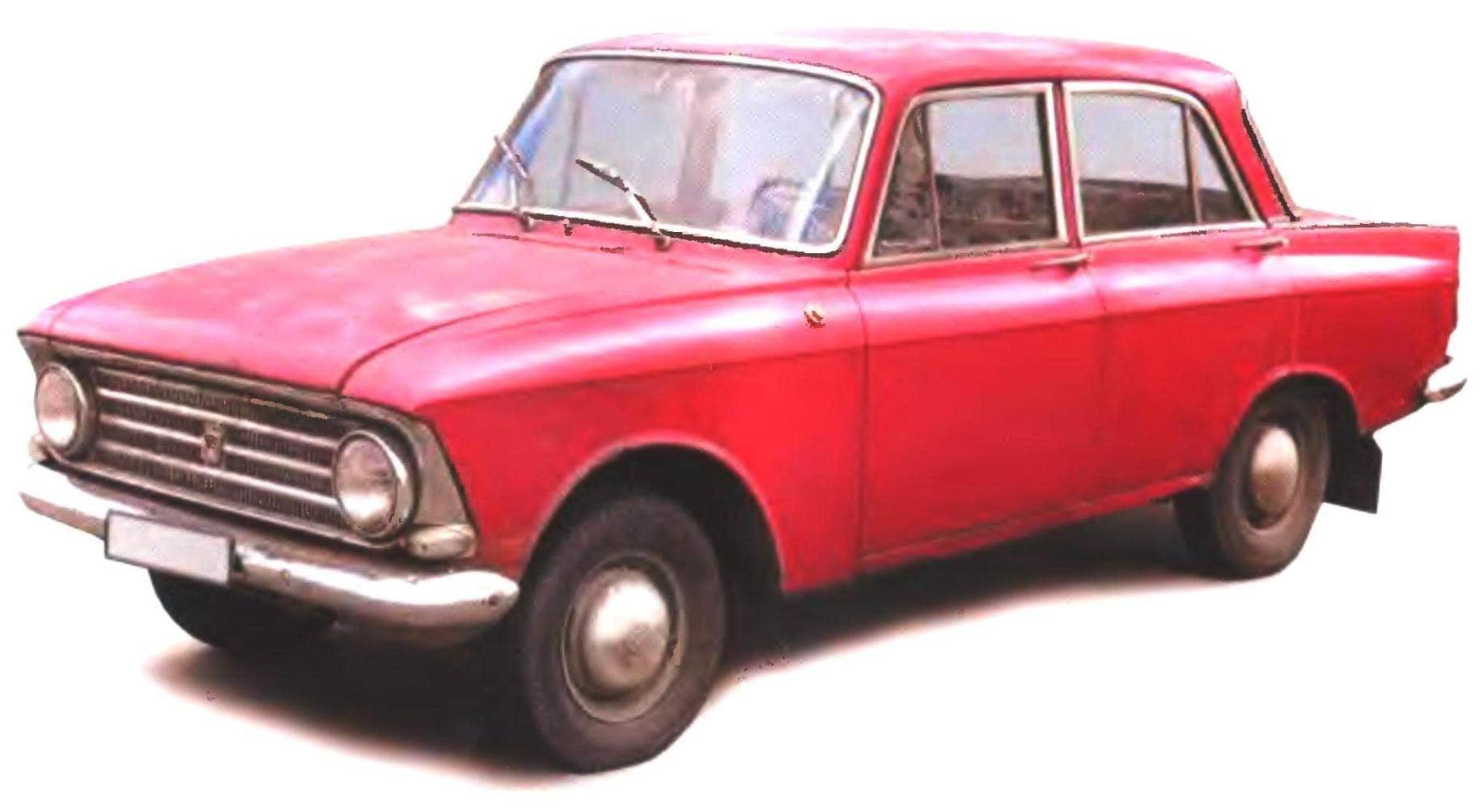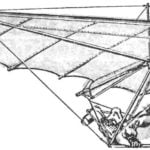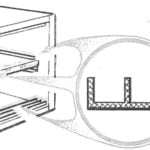 SOVIET CAR “MOSKVICH-408” ISSUED IN 1964. Youthful impressions sometimes impose their stereotypes on our lives. It’s funny that the “Moskvich-408” has remained in my mind a real car, and not his successor, “412”, hasn’t appeared six years later supermassive VAZ-2101 “Zhiguli”. And when in the early 1990-ies I was told that a car owner, a man very advanced in years, wants to sell the car “Moskvich-408ИЭ” low mileage, in General, with very few for that time’s money, I immediately agreed with the owner about the meeting.
SOVIET CAR “MOSKVICH-408” ISSUED IN 1964. Youthful impressions sometimes impose their stereotypes on our lives. It’s funny that the “Moskvich-408” has remained in my mind a real car, and not his successor, “412”, hasn’t appeared six years later supermassive VAZ-2101 “Zhiguli”. And when in the early 1990-ies I was told that a car owner, a man very advanced in years, wants to sell the car “Moskvich-408ИЭ” low mileage, in General, with very few for that time’s money, I immediately agreed with the owner about the meeting.
The garage in which was stored “Moskvich”, proved to be something of a time machine — when opened, the doors behind them were brand new chetyrehdverny export “408-th”, on the speedometer which was only 16 thousand miles! No scratches, no grooves, fresh rubber, “live” shock started, that is, with a half-turn… to Finish the deal agreed a week, but the owner suddenly somehow change your mind — as you can see, did not want to part with his car. Well, I did not manage to become the owner of dreams of my distant youth.
Back in 1964, when at the Moscow plant of small cars to replace obsolete cars “Moskvich” second-generation index 402 and 407, rolled off the sparkling fresh paint “408-th”. The appearance of the new car differed from the design of its predecessors — in place of rounded forms came the “suitcase” style tail fins characteristic of the products of American industry. Initially the car was produced with dvukhfaznoi system of the brain lighting, and since 1968 export “Muscovites” were equipped with four headlights. In short, the newcomer looked like a dandy among the boyars — his design was no worse than foreign machines of the same age, such as Opel Kadett and Renault 8/10. It should be noted that the “inner content” “408-th” it was almost the same as the transition model “Moskvich-403”, which worked out almost all the elements of the new “Moskvich” — is a new engine, suspension and chassis by the Way, “408” collected at the MZMA in parallel with the “403-m” another year, gradually reducing the release of the latest. Well, the sedan and wagon on the basis of “403-” produced at the plant until 1967.
Salon “Moskvich-408” clearance behind the style is quite modern (for that time) instrument panel with speedometer, dvuhseriynyy the wheel with a thin chrome ring audio signal, steering column shift lever transmission, transistor radio, panoramic front and rear glass. In short, the new “Moskvich” stood out for, in General, the usual monochrome background of Soviet cars of the early 1960s years — let me remind you, “Lada” in the country was not.
According to the official classification of the 1960-ies, “408” was considered a five-seater small car for General purpose with a closed four-door sedan. According to current classification, it belongs to passenger vehicles of the first group of small class.

The car was produced until 1976, by two domestic factories — the Moscow plant of small cars and Izhevsk machine-building plant. In addition, the “408-th” collected in Bulgaria, Levocska the car. The car was very repairable and a large part of motorists in our country served the “408” on their own.
The car was respected in the village for tegometall engine and decent ground clearance 178 mm, allow without any problems run the car on the Russian roads.
“408” was produced in the following variants: four-door “Moskvich-408М” (medical), “Moskvich-408Ю” (export tropical), “Moskvich-408Э” (export), “Moskvich-408СЭ” (special export), “Moskvich-408П” RH, “Moskvich-408Б” for the disabled with manual control and a five-door “Moskvich-426” station wagon and three-door “Moskvich-433” with a body type van with a payload up to 400 kg.
It should be noted that the abundance of export modifications this list is not accidental — in the late 1960-ies of the popularity of the “Muscovites” on the international market was quite high because of the good quality export option, and its relatively low prices, so about a third of annual production of the factory was exported. This is despite the fact that the need for such machines in the country was a huge queue to receive cars stretched for years.
The car “Moskvich-408” was fitted with engine model “408”, representing a further development of engines models, “407” and “407-D1” vehicle “Moskvich-407 and Moskvich-403”.
Engine “408” — a carbureted four-cylinder inline four-stroke, short-stroke, overhead valves. Its working volume was $ 1,358 L. engine Power “408” compared to previously released models has been increased to 50 l, and on machines with index “e” (export) — up to 55 liters.


The geometric scheme of the car “Moskvich-408”

Four-door sedan “Moskvich-408” issue of 1964

The structure of the car “Moskvich-408”:
1 — engine, 2 — front suspension, 3 — clutch, 4 — gearbox; 5 — steering wheel, 6— shaft drive; 7 — leaf spring rear suspension, 8 — rear axle, 9 — exterior
All the cylinders of the engine made of cast iron in one unit together with Carter. In the upper part of the cylinders were pressed short sleeve from special corrosion-resistant cast iron. Right in the block was located, the chamber valve mechanism. Cylinder head and pistons were cast aluminum alloy. On top of the piston was set to three compression rings and one oil control, are made of special cast iron. Crankshaft truck mount, forged from carbon steel. Reinforced neck shaft was subjected to surface hardening by high frequency currents. At the front end of the crankshaft using the dowel was mounted a drive gear of the camshaft and hub with pulley fan drive.
Gas distribution mechanism with the upper inclined arranged in a single row of valves installed in a sintered guide bushings, pressed into the cylinder head. The actuation of the valves from the camshaft through tappets, rods and rocker arms. The camshaft is steel, is mounted on three pillars. At the front end of the shaft attached to textolite gear, included in engagement with the gear of the crankshaft.
To the underframe of the car the engine was mounted on three legs through the rubber cushions.
The engine capacity of 50 l S. was slow, he worked in the low-octane gasoline A-76 and the low-quality oil stamps AU-8 (later М8В1).
The engine cooling system — forced, closed the Radiator is brass enclosed in a steel frame. In front of the radiator shutters, operated by lever from inside the vehicle. The water pump is mounted at the top front of the engine block. The pump drive, and with it the fan — with the help of Klingemann transmission from the pulley on the toe of the crankshaft.
The engine is equipped with a carburetor K-126 — dual-chamber, with a falling stream, dhdyfuri, sbalansirovanny. Compensation of the mixture it produced a pneumatic braking fuel with the adjustment of the composition of the mixture system idling.

“Moskvich-408Э”— export version

Engine “M-408”

Independent spring front suspension of the car

Spring rear suspension
The skeleton of the rotor body

“408-th”—front view, side and rear
The motor for the time of its release, hardly modernized, with unobtrusive service station of that time greatly simplified the search of spare parts for the repair.
Air filter “408-th” more like a motorcycle than on a car — primary treatment occurred in it due to changing the direction of movement of the air stream with the coarse fraction of the dust inertia got in the oil bag, and the second with the passage of air through a nylon fiber.
The engine had a combined lubrication system, where the pressure smeared indigenous and connecting rod bearings of the crankshaft, bearings and thrust flange of the camshaft, camshaft gear and the axis of the valve rocker arms, to all other friction surfaces the oil was fed by gravity and spray.
The car had a dry-plate clutch with the peripherally spaced springs and a hydraulic drive off from the pedal.
Transmission — three-way, four-speed, synchromesh of inertia type for unstressed enable the second, third and fourth gears. The shift lever according to the fashion of those years was located on the steering column. The shift pattern was almost the same as on modern cars, with the only difference that the “neutral” gearshift lever moved freely to the right and not the left, and along the steering column.
Leading is the rear axle (front-wheel drive passenger cars at that time in the USSR was not). Main gear — hypoid, together with the differential it was located in a cast-iron crankcase. Transmission main gear was connected the propeller shaft.
The car “Moskvich-408” — bearing body with a rigid Foundation, carrying out the function of the frame. In front of the body welded to the short sub frame.
Front suspension cars — lever-spring, independent, baskonia. She was fixed on the rigid steel cross beam box-section. Dampers that are located inside the suspension springs, hydraulic telescopic. It should be noted that drivers had every 50 thousand kilometers to pricewat four grease fittings on the hinges of the front axle. For comparison — front axle “Volga” GAZ-21 were 19 such greasers.
Rear axle was suspended by the brackets of the base body on two longitudinal semi-elliptic leaf springs. Shock absorbers — hydraulic, double action.
Steering gear “408-th” was a working pair, consisting of a globoid worm and dvuhgorbogo roller, mounted in cast iron housing. The turning radius of the car (on the track of the outer front wheel), was relatively low (5.0 m), allowing the driver to turn around in confined spaces. For comparison, the VAZ-2101 it was 5.2 m!
Brake system is consisted of wheel brakes with a hydraulic drive from a pedal. Rear wheel brakes also had a drive lever Parking brake, located under the instrument panel. All brakes shall be equipped with a device to allow automatic adjustment of the gap between the pads and the brake drums. Unfortunately, the machine didn’t have a vacuum booster, but, according to the memoirs of the former owners of “Muscovites,” brakes and without them was quite “sharp”. By the way, dealers “Autoexport” set to export cars hydrovac amplifiers.
Heating of the body consisted of a radiator connected to the engine cooling system, dvuhsotletnego the blower motor and several valves to direct the flow of warm air into the cabin and to the windshield.
The wiper of the “Moskvich-408” — with electric. It should be noted that the “Muscovites”-precursors index “402” and “407” was mechanically driven brushes are driven by a camshaft of the engine. Accordingly, the frequency and speed of their movement depended on his speed.
Front seat — sofa type with adjustable length and inclination of backrest, with the upholstery from black or beige faux leather. The interior of the car is quite comfortable, it’s convenient how the front and rear passengers. The machine is conventionally considered a five-seater, although the instruction manual for the machine it was noted that plant to the salon fifth passenger is possible only in the absence of Luggage when traveling short distances on good quality roads; however, the tire pressure of the rear wheels was proposed to increase to 2 atmospheres (considered normal pressure of 1.7 atmospheres).
Unusually large for that time, the windshield and rear glass in conjunction with thin pillars provide the driver with excellent visibility. Yes, and the machine was easy thanks to the “easy” pedals, levers and “steering wheel” steering. Unfortunately, the “408-th” was not equipped with side mirrors, but the drivers yourself install them using the mirrors from the motorcycle.

The mechanism of transmission shift lever with podrulevymi

The algorithm shift

Rear axle of the vehicle

An experimental model of “Moskvich-408-coupe”

The driver:
1 — steering wheel 2 — ignition lock, 3 — turn signal switch, 4 — fan switch Agapitus, 5 — dashboard 6 — ring horn switch, 7 — arm windshield wiper, 8 — stalk shift lever, 9 — rear view mirror, 10 — speaker grille radio, 11 — sun visors, 12 — arm outer hatch of the air flow units, 13 — arm internal air dampers, 14 — button choke control carb (“choke”), 15 — ashtray, 16 — the glove box lid, 17 — lever antenna, 18 — wheel heater valve, 19 — the cigarette lighter of 20.23 — arm control the radio, the 21 — damper heater, 22 — scale radio 24 — arm main light switch, 25 — throttle 26 — handbrake handle, 27 — a brake pedal 28, the clutch pedal 29, the pedal windshield washer pump, 30 — foot switch light headlight, 31 — control arm, grille, 32 — arm of the hood 33 — handle trunk lock (under the seat)

“IZH-Kombi”—the first Soviet hatchback production Izhevsk machine-building plant on the basis of the “408-th”
In October 1964, “Moskvich-408” debuted at the international motor exhibition held at Earl’s Court, near London. The car was well received okaloacoochee public, which is very favorable effect on the export of “Muscovites”. By the way, in 1958, at the world auto show in Brussels. A gold medal was awarded the “Moskvich-407” and “Grand Prix” received “Volga” GAZ-21 and “the Seagull.”
As already mentioned, the “408” was produced for the domestic market and external export models had the designation: “Moskvich-408Ю”, “Moskvich-408Э”, “Moskvich-408ИЭ” or “Moskvich-408СЭ”, equipped with four headlights instead of two and had more powerful (5 BHP) engine. To buy such within the country was possible only on checks of Foreign trade. Interestingly, in the capitalist countries “Moskvich-408” was delivered under the name Elite 1360 — the fact that at that time the firm RENAULT as a trademark was patented marking cars in a three-digit number with zero in the middle, and to sue because of this well known firm had no reason to.
In addition to the socialist countries, “Muscovites” in large enough quantities exported to the capitalist state, at that time did not have a developed road network, Greece, Norway, Sweden and Belgium. Dealers “Autoexport” independently equip such machines with vacuum brake boosters, ventilation grilles in C-pillar and rear auxiliary reflectors-reflectors.
In 1961 at MZMA was established a design group for the development of advanced engine with overhead camshaft, in the cylinder head. The team leader was the main digitalist MZMA I. Okunev. The creation of the engine was completed in 1967 — it was quite modern (even by today’s standards) engine with aluminum block and head, chain driven camshaft, crankshaft pornoporn, wet liners and hemispherical combustion chambers. Its working volume amounted to 1,478 liters, maximum power — 75 HP Production of the engine, dubbed M-412, during the year was deployed at the Ufa motor plant.
By this time experts MZMA modified under the new, more powerful motor the body “408-th” — new model received the name of “Moskvich-412”. For several years the plant was producing in parallel two cars — “412”, the engine that worked on the scarce at the time, gasoline AI-93, and “408,” which was satisfied by fuel with an octane rating of 72 and 76.
In conclusion, it should be noted that the time when MZMA (later it was renamed in AZLK) produced the model “408” and “412”, can be called the Golden age of the domestic automobile industry in General and Moscow in particular. The technical level of Soviet cars of that time were no worse than those produced by leading automobile companies, the transition from one model to another was carried out for 4 to 5 years, and in circuit racing and international rally our “Muscovites” occupied only prize-winning places.
I. EVSTRATOV



